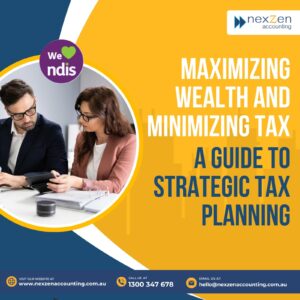Financial planning is the process of setting and achieving specific financial goals through a structured approach to managing one’s finances.The benefits of financial planning are multifaceted. Firstly, it provides a clear sense of direction by helping individuals and businesses define their financial goals and create a roadmap to attain them. Moreover, it promotes better financial decision-making by enabling people to prioritise expenses, save for emergencies, and invest wisely. Financial planning also helps in reducing financial stress and anxiety by ensuring a sense of control over one’s financial future.
What Pain Does Financial Planning Remove from Our life?
Financial Planning helps remove various pain points from our lives, including:
- Financial planning helps alleviate the stress of not knowing where your money is going or how you’ll meet your financial obligations.
- It provides a structured approach to manage and reduce debt, reducing the constant worry of mounting loans.
- Financial planning removes the uncertainty about your financial future by setting clear goals and strategies to achieve them.
- Financial planning helps build an emergency fund, easing concerns about unexpected expenses or emergencies disrupting financial stability.
What Opportunities does Financial Planning create in life?
Financial Planning creates various opportunities in life, including:
- Financial planning provides opportunities to build wealth over time through strategic investments and savings.
- Financial planning can help secure the necessary capital and resources to pursue entrepreneurial ventures and business opportunities.
- Through estate planning and wealth preservation, financial planning allows for the creation of a lasting legacy for future generations.
- Financial planning creates opportunities for greater financial security, reducing the risk of unexpected financial setbacks and providing peace of mind for you and your family.
What are the KPIs to measure
- Financial
- Return on Investment
- Net worth
- Stock Portfolio Performance
- Retirement fund Adequacy
- Non Financial
- Financial Freedom
- Quality of Life
- Reduction in Fear of Financial Setbacks
- Sense of Control
What are the key areas of Financial Planning
Financial planning encompasses several key areas, each of which plays a crucial role in achieving overall financial well-being. These key areas of financial planning include:
- Budgeting and Cash Flow Management
- Savings and Emergency Fund
- Debt Management
- Investment Planning
- Retirement Planning
- Tax Planning
- Insurance and Risk Management
- Estate Planning
- Education Planning
- Charitable Giving
- Specialized Financial Planning
- Cash Flow and Debt Management for Businesses
What are the positive impacts of Financial Planning?
Financial Planning can have many positive impacts on our life, including:
- Financial planning helps individuals and organisations build a safety net, ensuring they have resources to handle unexpected expenses and financial emergencies.
- Effective financial planning facilitates saving and investing, leading to wealth accumulation over time and the ability to achieve financial goals.
- Financial planning enables individuals and organisations to set and achieve specific financial objectives, such as homeownership, education funding, or retirement.
- A well-thought-out financial plan provides peace of mind by giving individuals and organisations a sense of control over their financial future and reducing financial stress and anxiety
What are the negative impacts of Not doing Financial Planning?
Not doing Financial Planning can have a number of negative impacts on our life, including:
- Without a plan, individuals may experience heightened financial stress and anxiety, as they lack clarity on managing their finances effectively.
- Without a strategy for debt management, individuals can easily accumulate high-interest debt, leading to a cycle of financial strain.
- Without financial planning, individuals may miss out on investment opportunities and potential tax savings, limiting their financial growth.
- Overall, not engaging in financial planning can result in a lack of financial security, leaving individuals and organisations exposed to financial risks and uncertainties.
Process of Hiring an efficient outsourcing Accounting Firm
The process of financial planning is as follows:
- Establish Financial Goals: Identify your short-term and long-term financial objectives. These could include saving for retirement, buying a home, paying off debt, funding education, or starting a business.
- Assess Current Financial Situation: Gather information about your current financial situation, including income, expenses, assets, liabilities, and investments. Analyse cash flow to understand how money comes in and goes out each month.
- Create a Budget: Develop a detailed budget that outlines your income and expenses. This helps you understand where your money is going and identify areas for potential savings.
- Emergency Fund: Ensure you have an emergency fund in place to cover unexpected expenses or financial emergencies. Financial planning should include building and maintaining this fund.
- Debt Management: Evaluate your outstanding debts and create a strategy to pay them down. Prioritise high-interest debts while making minimum payments on others.
- Risk Assessment: Assess your risk tolerance and insurance coverage. Ensure that you have adequate health, life, disability, and property insurance to protect against unforeseen events.
- Investment Strategy: Determine your investment goals, risk tolerance, and time horizon. Develop an investment strategy and asset allocation plan that aligns with your objectives.
- Retirement Planning: Calculate how much you need to save for retirement to maintain your desired lifestyle. Consider retirement accounts like 401(k)s, IRAs, or pensions to fund your retirement goals.
- Tax Planning: Optimize your tax strategy by taking advantage of tax-efficient investment vehicles and deductions.
- Estate Planning: Establish or update your estate plan, including wills, trusts, and powers of attorney to ensure the smooth transfer of assets to your heirs.
- Implementation: Put your financial plan into action by opening accounts, making investments, and adjusting your budget accordingly.
- Regular Monitoring and Review: Periodically review your financial plan to track progress toward your goals.
- Professional Advice: Consider seeking guidance from a certified financial planner (CFP) or a financial advisor to help you develop and implement your financial plan.
- Adaptation and Flexibility: Be flexible and willing to adapt your financial plan as circumstances change, such as career advancements, family changes, or economic shifts.
Case Study
David (not real name) is a 40-year-old entrepreneur who owns a small but growing NDIS Support work business. His business has been profitable, but he recognizes the need for more comprehensive financial planning to ensure long-term success and achieve specific business and personal goals.
He had outlined the following goals:
- Business Growth: David aims to expand his IT consulting firm by increasing the client base and offering additional services.
- Retirement Planning: He wants to create a retirement plan that provides for a comfortable retirement.
- Tax Efficiency: David seeks strategies to minimise his business and personal tax liabilities.
- Emergency Fund: Establish an emergency fund to protect the business during unexpected downturns.
- Debt Management: Manage and reduce business debt to improve financial stability.
David recognized the need of financial planning to achieve these goals. He followed the above mentioned process with the help of a professional Financial Planner. He was able to achieve the following results:
- David’s business expands successfully, increasing its client base and profitability. With a well-structured retirement plan, he starts saving for his retirement systematically, ensuring financial security in the future.
- Effective tax planning results in reduced tax liabilities for both his business and personal finances.
- The business’s emergency fund provides a financial safety net during a period of unexpected economic downturn, preventing major disruptions.
- David manages and significantly reduces business debt, improving the company’s financial stability and creditworthiness.
Through diligent financial planning, David achieved his business and personal financial goals, ensured the stability of his company, and secured a prosperous retirement. His commitment to financial planning helped him navigate the complexities of entrepreneurship and achieve long-term financial success.
Remember, this is just a general guide and each organisation is different, so it’s important to properly review your finances with a cost-benefit analysis before making any big decisions. Our NexZen tax experts can provide personalised advice and can help you find out what you can claim as a small business. Get in touch to book a discovery call.
Until then, thanks for reading and if you liked this or you know someone who would also find this helpful please feel free to reply and share. See you next time. Can’t wait.









